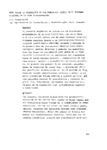Nota sobre la cronología de los fenómenos ígneos en el extremo oriental de la zona sudportuguesa

View/
Use this link to cite
http://hdl.handle.net/2183/5901Collections
Metadata
Show full item recordTitle
Nota sobre la cronología de los fenómenos ígneos en el extremo oriental de la zona sudportuguesaAuthor(s)
Date
1984Citation
Cadernos do Laboratorio Xeolóxico de Laxe, 1984, 8: 103-110 ISBN: 84-7492-204-6
Abstract
[Resumen] La sucesión magmática se inicia con el vulcanismo preorogénico de la Faja Piritífera, que en el área aquí considerada parece ser de edad Viseense inferiorViseense superior frente a la Tournaisiense-Viseense inferior generalmente admitida. Durante y después de la primera fase de plegamiento (Westfaliense medio) intruyeron gabros, dioritas y granito con moscovita. Tras las fases de plegamiento pero antes de la fracturación tardihercínica se emplazaron los siguientes tipos de rocas ígneas: granito y granodiorita de textura normal, granito y granodiorita de cuarzo globuloso, el granito con granate de El Berrocal, pequeñas masas de tonalitas de grano fino, y abundantes p6rfidos graníticos (Westfaliense D). En el período de fracturación tardía (Estefaniense inferior o medio) intruyeron abundantes diques básicos y algunas aplitas, así como pequeños cuerpos de granodiorita y tonalita de grano fino. Finalmente, extruyeron los basaltos olivínicos de la cuenca del Viar (Estefaniense superior o Autuniense) . [Abstract] The magmatic succesion begins with the geosynclinal volcanism of the Pyrite Belt (Lower to Upper Visean and not Tournaisian-Lower Visean as is established in other localities). During and after the first folding phase, gabbros, diorites and muscovite granite were intruded (Middle Wetphalian). After the phases of folding but before the tardihercynian faulting, there was the following intrusions: granite and granodiorite with normal texture, granite and granodiorite with globular quartz, the body of garnet bearing granite of "El Berrocal", fine grained tonalites, and a number of varied granitic porphyries (Westphalian D). At the time of faulting (Lower or Midle Stephanian) the magmatic activity was represented by abundant basic dikes, aplitic granite and fine grained granodiorite and tonalite. The last igneous rocks in the region are the olivine basalt of the Viar basin (Upper Stephanian or Autunian)
ISBN
84-7492-204-6





